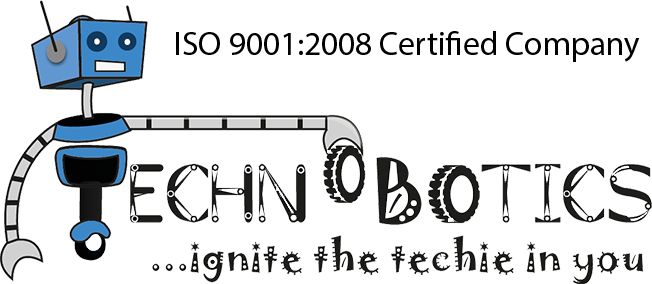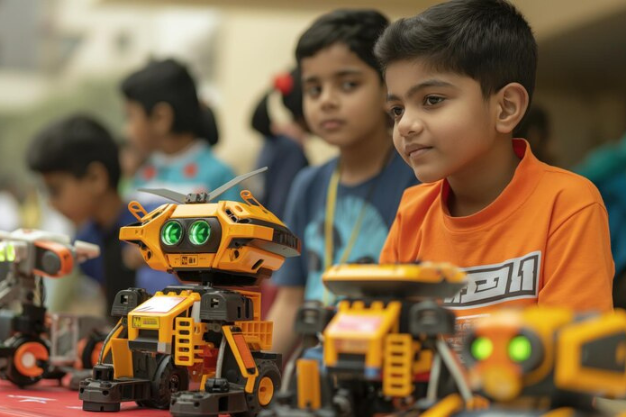In today’s fast-paced technological world, preparing children for the future has become a key concern for parents and educators alike. One of the most promising fields gaining attention is robotics. Introducing kids to robotics courses early has shown tremendous benefits, fostering creativity, problem-solving, and a deeper understanding of STEM (Science, Technology, Engineering, and Mathematics). So, what does the research say about the impact of robotics on children’s development, and how can robotics courses play a pivotal role in shaping young minds?
Early Introduction to Robotics: A Game-Changer
Numerous studies have pointed to the significant advantages of teaching robotics to children. According to a study by the International Journal of Engineering Education, introducing robotics in primary and secondary education can improve academic performance in mathematics and science. Robotics enhances students’ cognitive abilities and improves their ability to think critically and work collaboratively.
The interactive nature of robotics allows children to see the real-world applications of theoretical concepts. Instead of merely learning equations or theories, children engage in hands-on activities where they can apply those concepts. This approach helps them better grasp abstract ideas and retain information.

Cognitive and Social Benefits of Robotics for Kids
- Enhanced Problem-Solving Skills: Robotics challenges kids to solve problems creatively. When they build a robot, they are tasked with identifying issues, troubleshooting, and thinking critically about improving their designs. This process fosters a mindset of resilience and adaptability—skills that are crucial for success in any career.
- Boosting STEM:Learning many studies highlight how classes for robotics directly correlate with improved performance in STEM-related subjects. Robotics integrates all elements of STEM, offering a holistic learning experience. Enrolling children in robotics courses significantly enhances their aptitude in mathematics, science, and engineering principles due to the hands-on application of these subjects.
- Collaboration and Teamwork:Robotics often involves group projects, encouraging children to collaborate with peers. Working in a team teaches them to communicate their ideas, listen to others, and solve problems collectively. This collaborative aspect is invaluable, as working well with others is essential in academic and professional environments.
- Creativity and Innovation: Building robots allows children to use their imagination to design and create unique solutions. The flexibility of robotics lets them experiment, innovate, and explore different possibilities, driving their creative thinking forward. Creativity is an important component of modern education, and robotics courses provide the perfect platform to nurture this trait in young learners.
Research-Backed Evidence Supporting Robotics Education
The growing body of research around robotics education is overwhelmingly positive. According to a study from the University of Cambridge, children exposed to robotics from a young age develop superior computational thinking skills, making them better prepared for future technological challenges.
Another research conducted by Tufts University found that integrating robotics classes into the school curriculum improves children’s engagement levels, making them more likely to stay interested in learning throughout their education. The hands-on experience with robotics allows children to learn by doing, leading to greater enjoyment and a sense of accomplishment.
These findings demonstrate that robotics isn’t just a trend; it’s an essential part of modern education. Introducing children to robotics can prepare them for success in an increasingly technology-driven world, setting them up for a bright future.
How Robotics Prepares Kids for the Future
As we move into a more technologically advanced future, skills in robotics and automation are becoming more critical. Many industries, from healthcare to manufacturing, incorporate robotics into their operations. By enrolling kids in robotics courses, parents can give them a head start in understanding these emerging technologies.
There’s a growing demand for robotics experts. The IFR expects a 12% annual increase in robotics-related jobs over the next decade. Introducing children to robotics at an early age can cultivate their interest in the field and equip them with valuable skills that can open up diverse career opportunities.
Introducing Robotics at Technobotics
At Technobotics, we offer engaging and fun robotics courses that help kids develop coding, engineering, and design skills. Our classes for robotics cater to all ages and skill levels, ensuring every child finds the right fit. With a hands-on approach, we encourage kids to experiment, innovate, and understand technology’s impact, making them active participants in their learning journey.
Conclusion
The research is clear: introducing kids to robotics offers numerous cognitive, social, and educational benefits. It enhances problem-solving skills, boosts STEM learning, fosters creativity, and prepares children for future careers in technology. Early enrollment in robotics courses gives children a competitive advantage and prepares them with essential skills to thrive in an ever-evolving world.
Thinking about giving your child a head start? Why not sign them up for one of the awesome robotics classes at Technobotics? Our courses are made to ignite the imagination of the next generation of creative minds, innovators, and puzzle-solvers. By starting early, your child can unlock their potential and develop a passion for technology that will last a lifetime.


